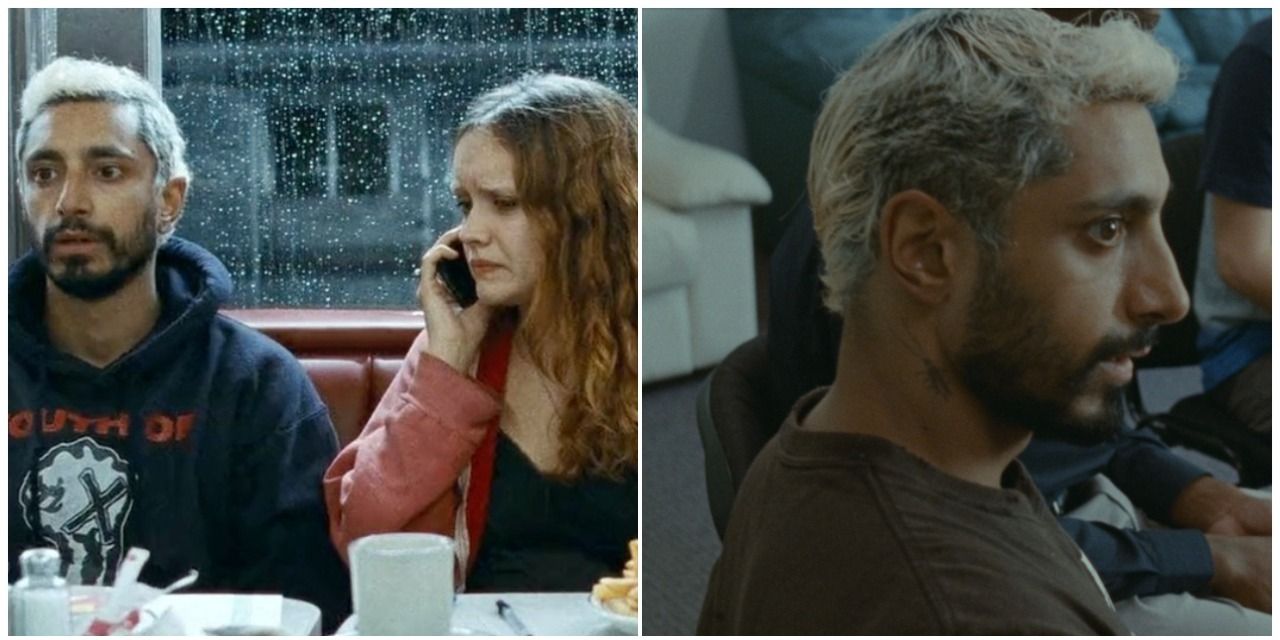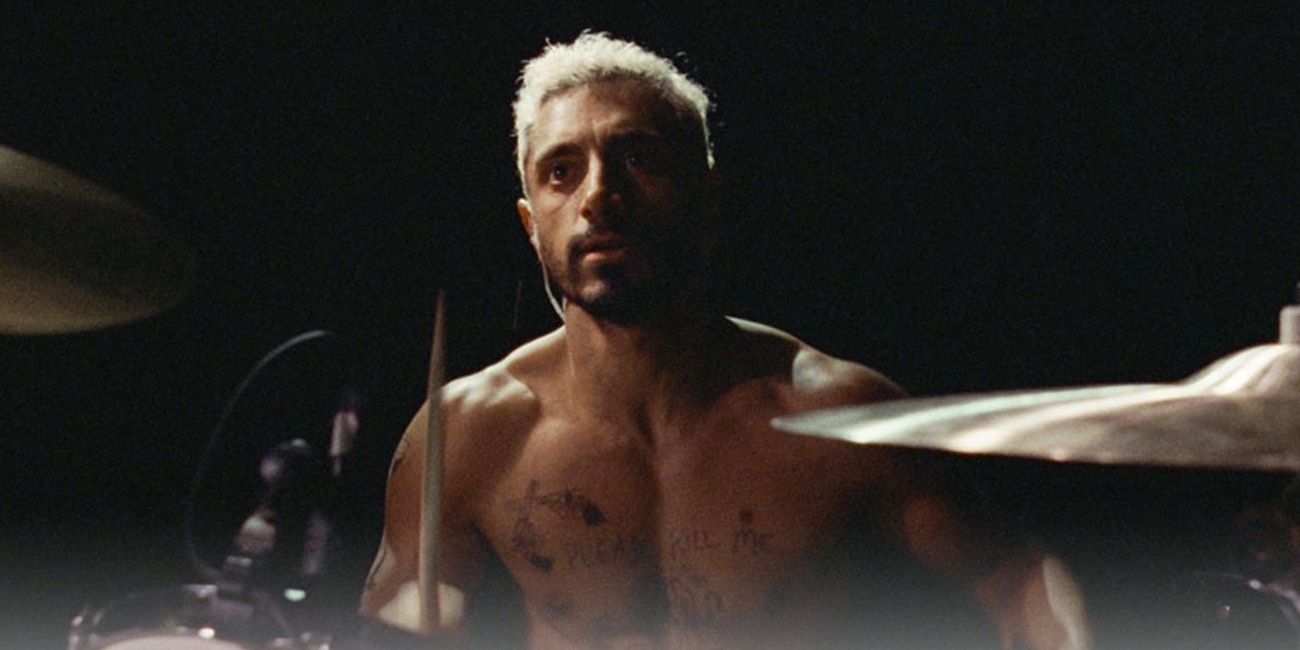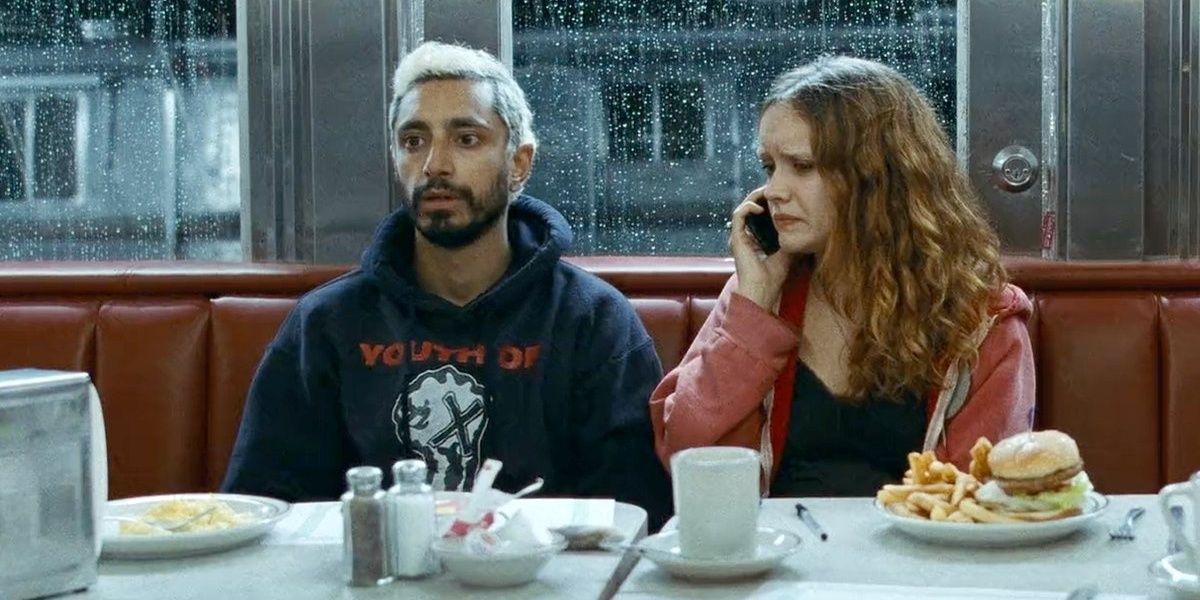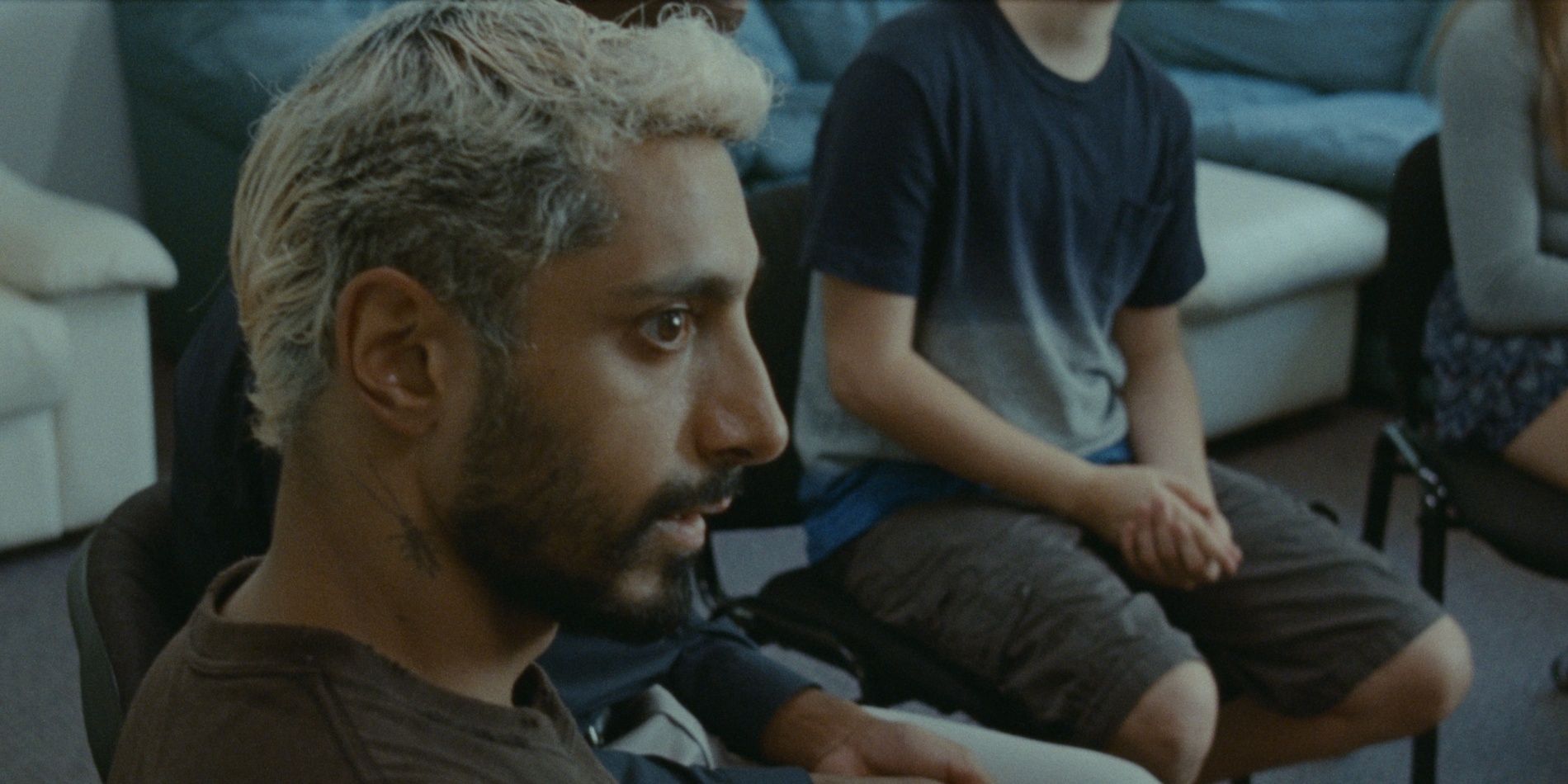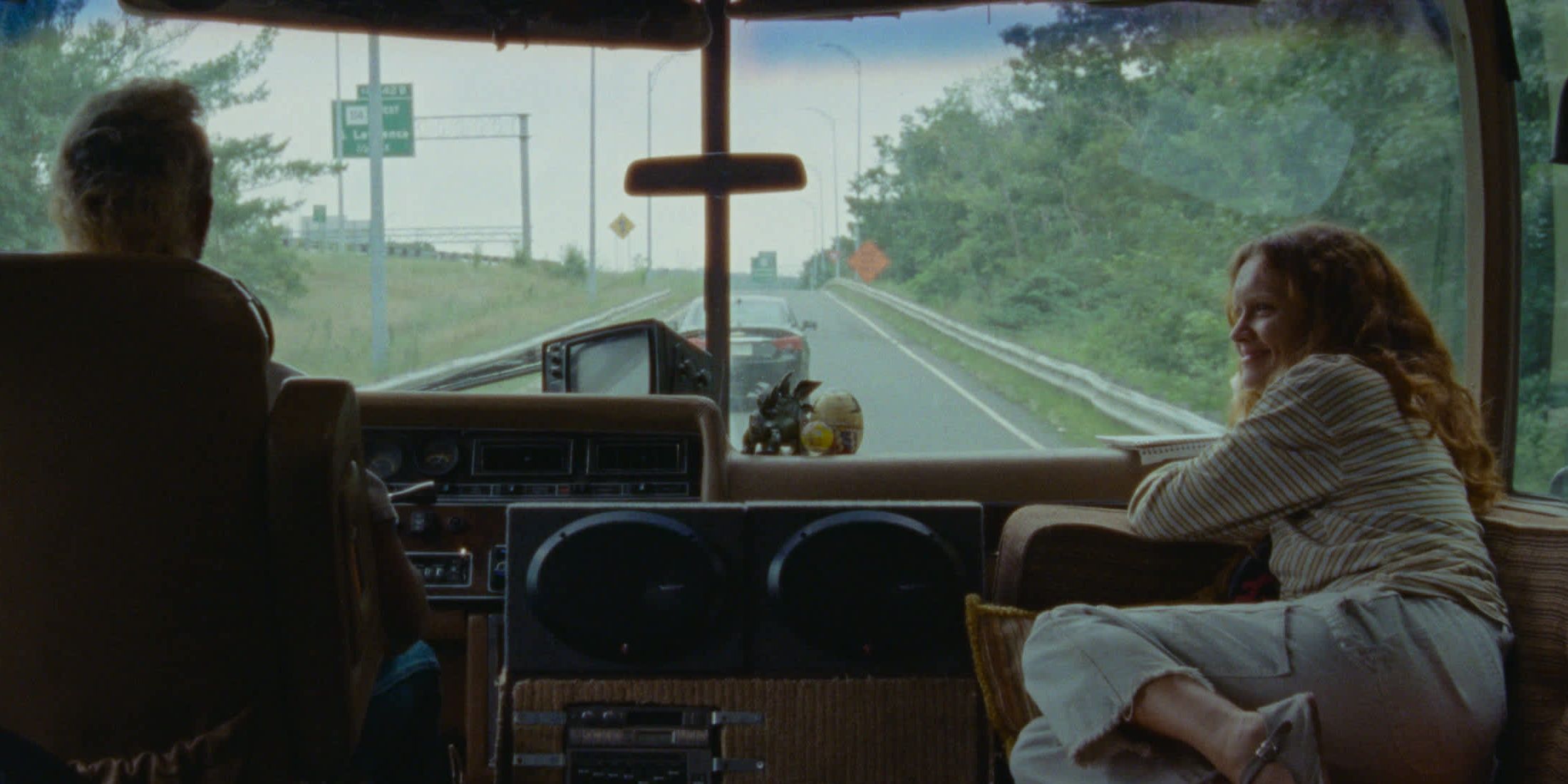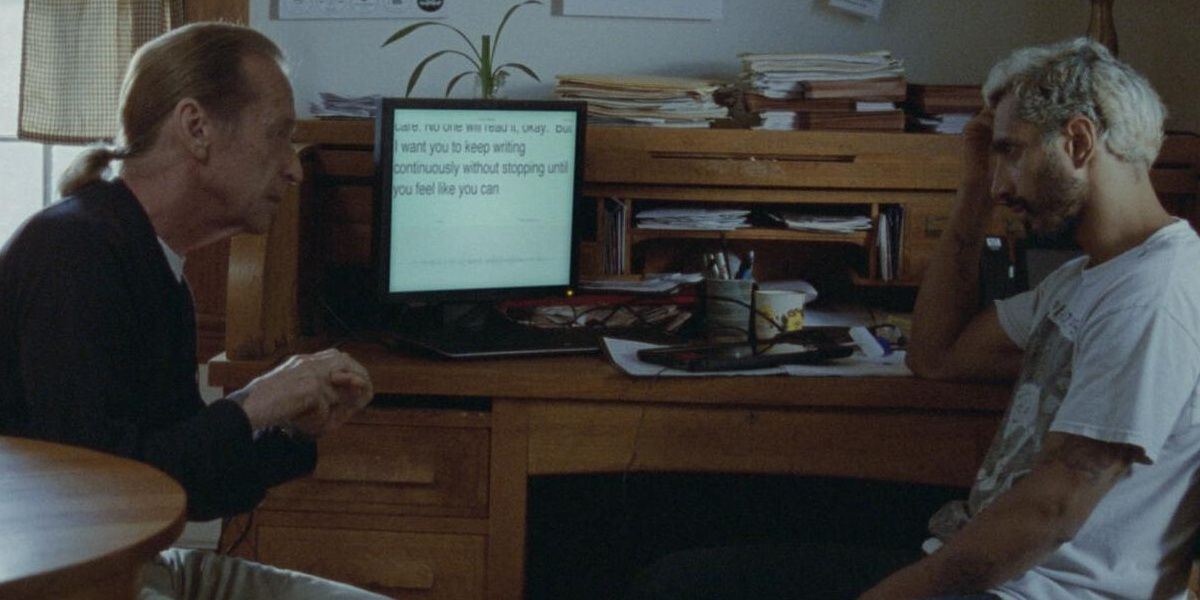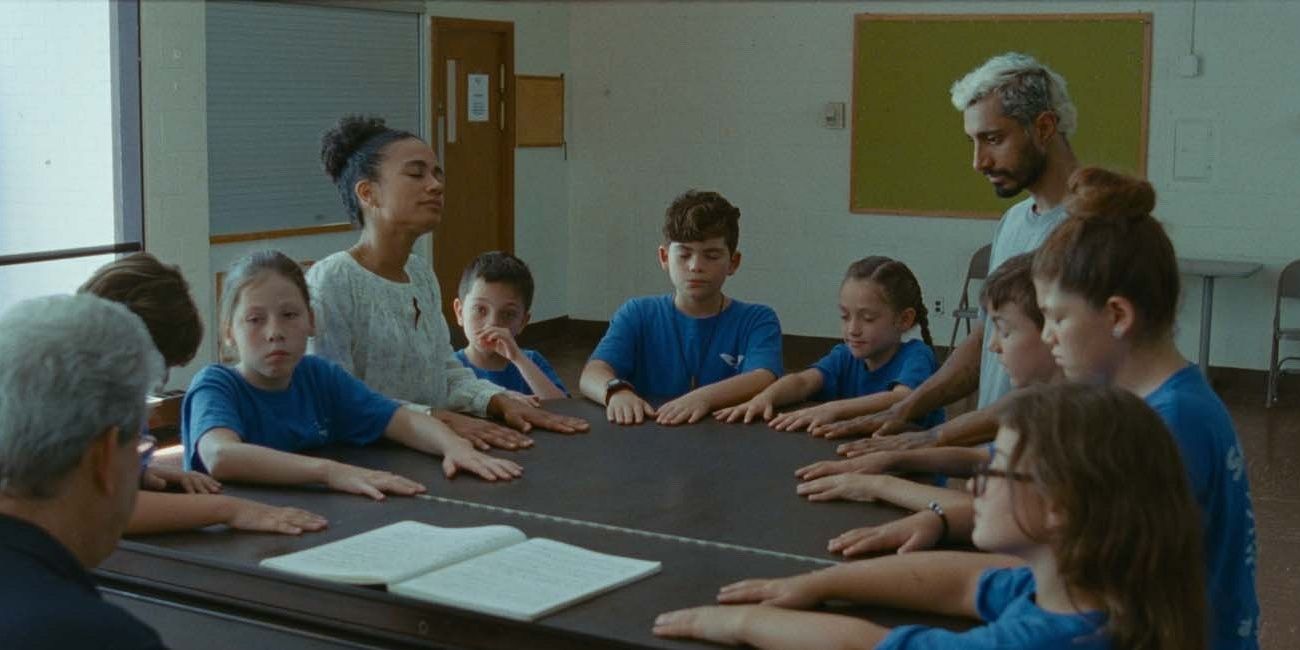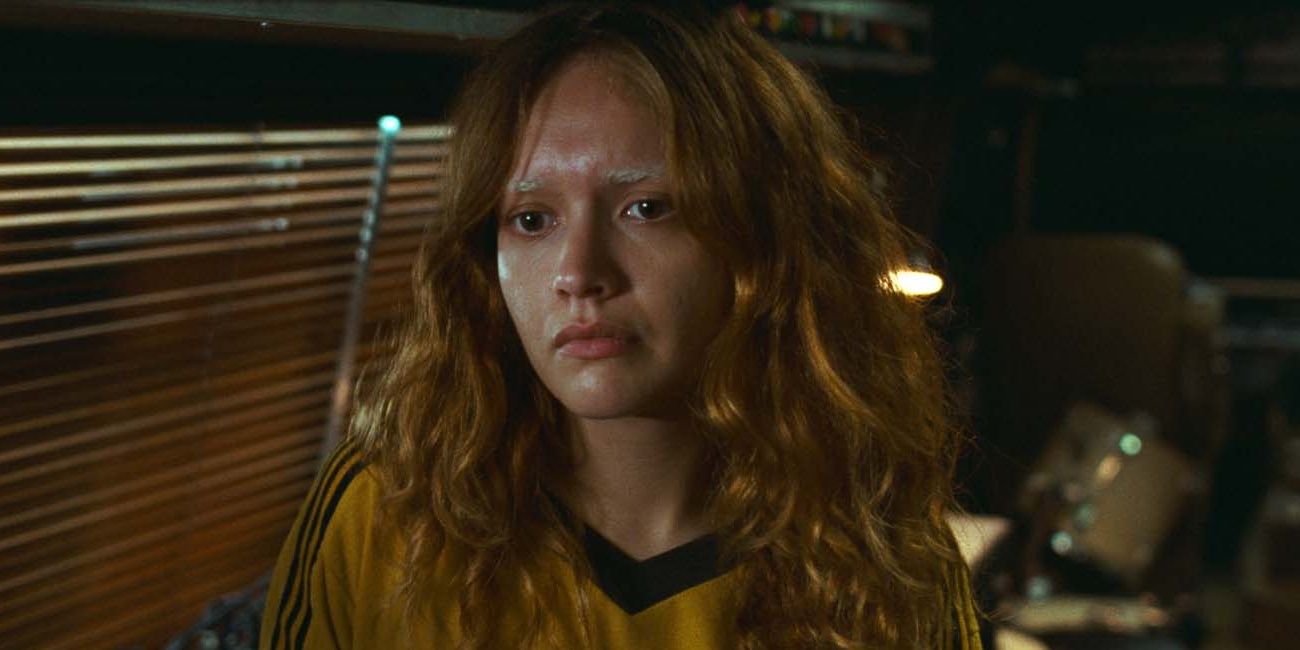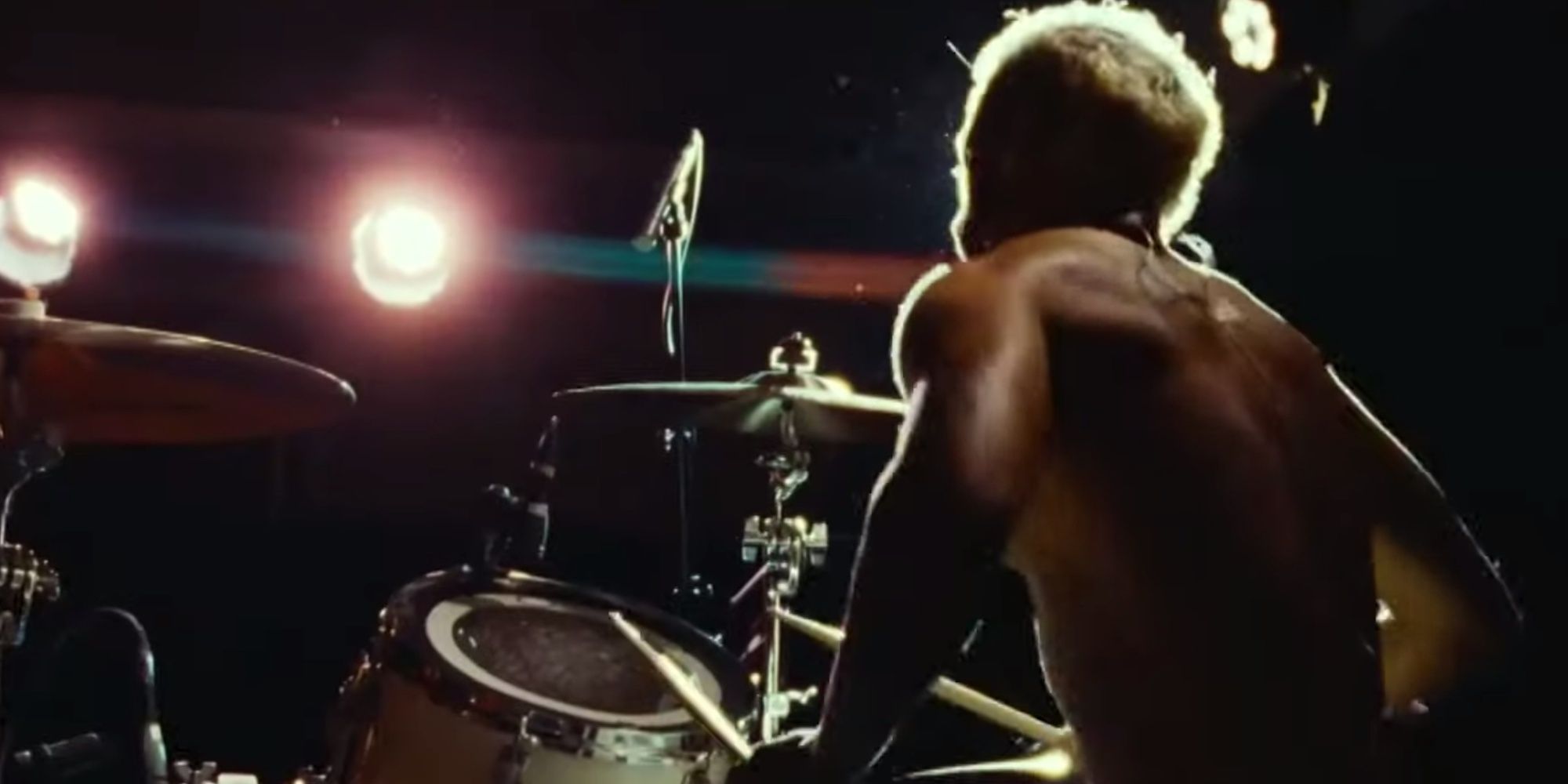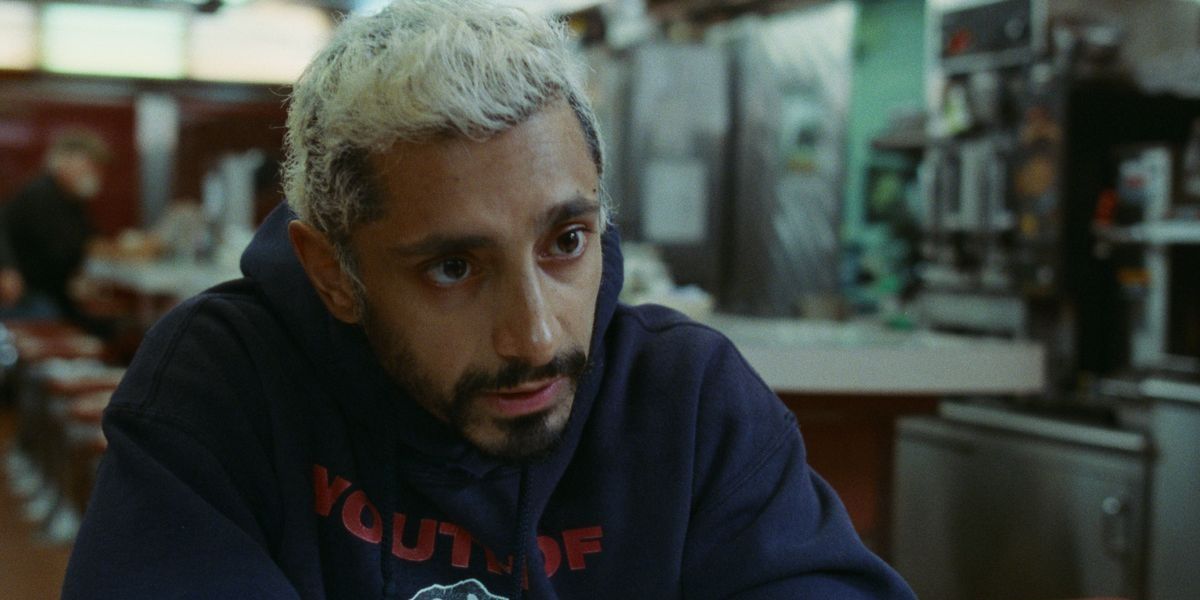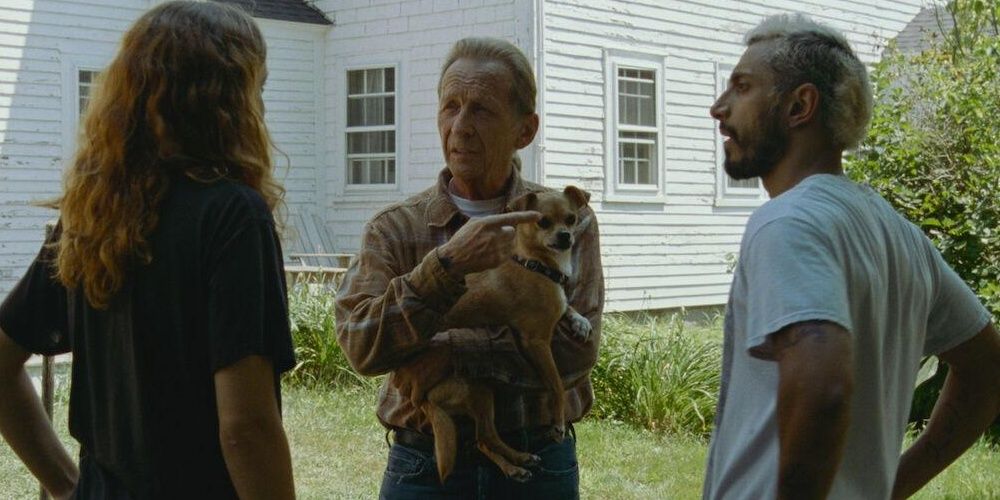Darius Marder’s directorial debut with Sound of Metal has brought a revolutionary new style of aural storytelling to the screen. His drama follows punk drummer, Ruben (Riz Ahmed), who experiences tinnitus and extreme hearing loss that requires him to leave the stage -- and his girlfriend, Lou (Olivia Cooke) -- to adapt and learn about his condition. However, he finds that he is not alone as several members of a rural deaf community offer him support and help.
One of the most notable elements of Marder’s film, which he co-wrote with his brother Abraham Marder, is the sound design. Sound of Metal employs immersive aural techniques from sound designer, Nicolas Becker, that allows the audience to understand in depth what Ruben is experiencing and feeling. From the sound mix to other aspects of production, Marder’s film utilizes interesting techniques to bring his sensory piece to life. Here are some behind-the-scenes facts about the film, from sound design to filming.
Ahmed Wore Auditory Blockers While Filming
In an interview with USA Today, Ahmed reveals that he actually wore auditory blockers deep inside his ear canal that emitted white noise so he couldn’t hear anything, including the sound of his own voice.
The filmmakers made these custom-fit earpieces for Ahmed to wear when his character experienced severe hearing loss, and the team would feed Ahmed high-frequency sounds for the actor to mimic the scenes where he has a hearing impairment.
All Three Acts Were Filmed In Consecutive Order
In an interview with HR, Cooke says they shot all three acts of the film in order, allowing the actors the rare opportunity to experience and tell the story linearly. This also created a more genuine distance (and reunion) between Cooke and Ahmed and, more accurately, Lou and Ruben, as Ruben enters a deaf community for the majority of the second act and cannot contact Lou until later in the third act.
Cooke says “there was physical distance and time between Riz and I before we saw each other again for the last act. So it was really interesting to kind of have to relearn how to be with each other — like Ruben and Lou, in a way.”
Ahmed Spent Seven Months Learning American Sign Language
Ahmed spent seven months learning American Sign Language to prepare for his role. As Marder and the rest of the team sought to provide an accurate portrayal of an individual of the deaf community, they wanted to bring to light Ruben’s struggles and growth in the film.
On learning ASL, Ahmed says, “I tried to take an emotional approach...Ruben swings between seeing deafness as a loss and a disability and realizing that deafness is actually a culture and an opportunity to connect more deeply."
The Idea For The Film Began Thirteen Years Ago
In an interview with Observer, Marder reveals the idea for the film began thirteen years ago when he first met writer/director Derek Cianfrance, with whom he co-wrote The Place Beyond the Pines (2012). Marder says within 30 seconds of meeting, the two were already discussing the seed of what would become Sound of Metal.
Cianfrance was not interested in making the movie himself, and Marder later wrote the script with his brother, beginning with the larger idea of tinnitus and the deaf community, which then resulted in Ruben and Lou’s journey.
The Film Was Shot In Four Weeks
The film worked with a limited budget, so filming had to commence and conclude quickly. They shot the entire project in four weeks, with only two takes for each scene, so “everyone really got down in the trenches and brought the best that they could to every single moment,” Ahmed says.
The majority of the film takes place in a rural community for deaf recovering addicts, with a handful of scenes in the first act occurring in Ruben and Lou’s tour trailer and a few scenes occurring in Paris in the final act.
A Large Portion Of The Cast Are Members Of The Deaf Community
In an interview with Collider, Marder says from the start he wanted to represent the deaf community and culture in his film. A large portion of the actors in the cast are actually from the deaf community in real life, most notably Paul Raci, who plays Ruben’s mentor Joe and grew up a child of deaf adults (CODA).
ASL coach Jeremy Stone, who plays the ASL teacher in the film and was also Ahmed’s ASL teacher in the seven months leading up to filming, was also Marder’s creative assistant throughout filming. Marder said he gave Stone “a lot of freedom to direct deaf actors with a level of nuance that I couldn’t possibly understand or have...That was really what I felt was necessary, as it related to a culture that wasn’t my culture.”
Olivia Cooke Didn’t Know What The Audience Wouldn’t Hear
While filming the earlier scenes when Ruben loses his hearing, Cooke said she didn’t know which parts would be heard and which parts wouldn't. Cooke said Marder “really wanted us to have our own worlds and our own experiences going on when we were doing the film,” so he would have a private dialogue with Ahmed as to when it would be muffled for the audience (and for Lou). In a way, Cooke said she “was just coming at this through Lou’s perspective, really, which I think was probably a bit more truthful for the performance.”
Nicolas Becker Used Skulls And Helmets For The Sound Design
In the brainstorming process for the aural aspects of the film, sound designer Nicolas Becker and Marder experimented by putting microphones inside skulls and mouths. Becker “mic’d the insides of preserved skulls and helmets to get at that feeling of being enveloped” and “used stethoscope-style microphones, along with mics that go inside a performer’s mouth to create...how Ruben experiences sound from the inside out.”
With these methods, Becker and Marder certainly do achieve their goal to have the audience experience Ruben’s tinnitus, as the audience hears the same echoing chamber of emptiness in the film that Ruben does, which creates a more sensory experience beyond the visuals.
1,500 Pages Were Whittled Down To A 90-100 Page Script
Marder knew he wanted to involve music and deafness in the early version of his story, but the addiction aspect of Ruben’s story took years to develop. He said he and his brother wrote numerous scenes and storylines before they really discovered Ruben and Lou as characters. In fact, “we even wrote Lou’s whole story that you don’t see on the screen,” but this helped the brothers understand the characters and direction even better. In the end, they ended up with around 1,500 to 2,000 pages of writing whittled down to a final 90 to 100 pages.
The Sound Mix Took Twenty-Three Weeks
One of the main questions Marder and his brother sought to answer while making the film is whether they could create a cinematic experience that people hadn’t heard before, which Marder calls PoH, or point of hearing. The planning process started years before the shoot, and Marder coordinated with Becker and his DP Daniël Bouquet to brainstorm “how sound and picture can co-exist and how they need to interact.”
The sound-mix during post led by Mikkel Nielsen took twenty-three weeks, far longer than the shoot and even the picture edit. The result is a sensory experience more than simply a visual one, a significant feat for a film.

